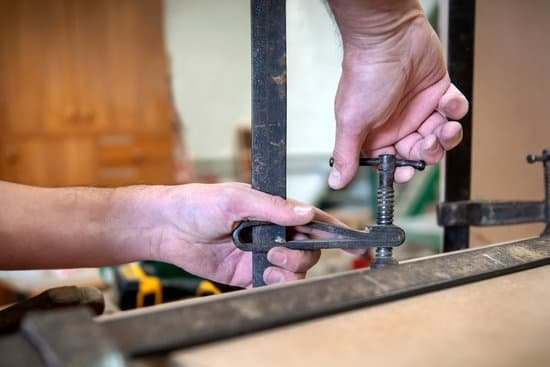Are you working on a woodworking project and wondering which jigsaw blades to use for woodworking? Choosing the right jigsaw blade is essential for achieving precise and clean cuts in your woodworking projects. Different types of wood require different types of jigsaw blades, and understanding the factors to consider when choosing the best blade is crucial for successful woodworking.
In this article, we will provide an overview of the different types of jigsaw blades used in woodworking, including specialty blades for precision cuts and curves. We will also discuss the factors to consider when selecting the best jigsaw blades for your woodworking projects, as well as provide recommendations for the best blades for softwood and hardwood.
Whether you are a beginner or an experienced woodworker, having the knowledge to select the right jigsaw blade for your specific project is important. By understanding the differences between various jigsaw blades and considering important factors, you can achieve professional-quality results in your woodworking endeavors.
Understanding Different Types of Jigsaw Blades for Woodworking
When it comes to woodworking, the type of jigsaw blade you use can make a significant difference in the outcome of your project. There are various types of jigsaw blades specifically designed for woodworking, each with its own unique features and cutting abilities.
Types of Jigsaw Blades
There are several different types of jigsaw blades that are commonly used for woodworking projects. These include high-speed steel (HSS) blades, bi-metal blades, carbide-tipped blades, and diamond-grit blades. Each type of blade is designed for specific materials and cutting tasks, so it’s important to understand the differences between them in order to choose the right one for your project.
Teeth Per Inch (TPI)
One important factor to consider when choosing jigsaw blades for woodworking is the teeth per inch (TPI). Blades with a lower TPI are better suited for cutting through thicker materials, while those with a higher TPI are ideal for making smoother cuts in thinner materials. It’s important to match the TPI of the blade to the thickness and hardness of the wood you will be working with.
Tooth Configuration
In addition to TPI, another important consideration when selecting jigsaw blades for woodworking is tooth configuration. The three main tooth configurations are straight, tapered, and progressive. Straight-toothed blades are best for fine straight cuts in softwood, while tapered-toothed blades are designed for curved cuts. Progressive-toothed blades have varying tooth sizes and spacing which make them versatile for both straight and curved cuts in various materials.
Understanding the different types of jigsaw blades available for woodworking projects will help you make an informed decision when selecting the right blade for your specific needs. Whether you’re working with softwood or hardwood, making precision cuts or curved shapes, there’s a specific type of jigsaw blade that is best suited for each task at hand.
By considering factors such as teeth per inch (TPI) and tooth configuration, you can ensure that you choose the most appropriate jigsaw blade which is essential to achieving clean and accurate cuts in your woodworking projects.
Factors to Consider When Choosing Jigsaw Blades for Woodworking Projects
When it comes to choosing the right jigsaw blades for woodworking projects, there are several important factors to consider. The type of material you are cutting, the thickness of the material, and the type of cut you want to make all play a role in determining which jigsaw blade is best suited for the job.
Type of Material
One of the first factors to consider when choosing jigsaw blades for woodworking projects is the type of material you will be cutting. Different materials require different types of blades in order to achieve clean and accurate cuts.
For example, if you are working with softwood such as pine or cedar, a blade with fewer teeth and a lower tooth count may be more suitable. On the other hand, hardwoods like oak or maple may require a blade with more teeth and a higher tooth count to prevent splintering and ensure smoother cuts.
Thickness of Material
In addition to considering the type of material you will be cutting, it’s also important to take into account the thickness of the material. Thicker materials will require a blade with larger and more aggressive teeth in order to effectively cut through the wood. Conversely, thinner materials may require a finer-toothed blade to prevent tearing and splintering.
Type of Cut
Lastly, when choosing jigsaw blades for woodworking projects, it’s important to consider the type of cut you want to make. Whether you are making straight cuts, curved cuts, or intricate designs, there are specific types of jigsaw blades that are better suited for each application. Understanding the different types of cuts you will be making can help narrow down your options and ensure that you select the right jigsaw blade for the job at hand.
By considering these factors when choosing jigsaw blades for woodworking projects, you can better ensure that you select blades that are best suited for your specific needs and achieve professional-quality results in your woodworking endeavors.
Best Jigsaw Blades for Softwood
When it comes to woodworking, selecting the right jigsaw blade is crucial to achieving clean and precise cuts, especially when working with different types of wood. Softwood, such as pine, cedar, or spruce, requires specific jigsaw blades that can smoothly cut through the material without causing splintering or tear-out. Understanding the best jigsaw blades for softwood is essential for any woodworker looking to tackle various projects.
One of the most recommended jigsaw blades for softwood is a high carbon steel blade. These blades are durable and efficient in cutting through soft materials without dulling quickly. The high carbon steel construction allows for sharp and clean cuts on softwood, making it an ideal choice for general woodworking tasks. Another popular option for softwood is a bi-metal jigsaw blade, which combines high-speed steel and carbon steel, providing longevity and flexibility while ensuring precision cuts.
It’s important to consider the blade’s teeth per inch (TPI) when choosing the best jigsaw blade for softwood. Typically, a lower TPI is suitable for softer materials as it offers rapid cutting speed with minimal resistance. A TPI ranging from 8 to 10 is recommended for cutting softwood effectively. Additionally, opting for a blade with aggressive tooth geometry can enhance performance when cutting through softwood.
| Jigsaw Blade Type | Recommended Material |
|---|---|
| High Carbon Steel Blade | Softwood (e.g. pine, cedar) |
| Bi-Metal Blade | Softwood (e.g. spruce) |
Best Jigsaw Blades for Hardwood
Woodworking with hardwood requires precision and the right tools to achieve the desired results. When it comes to choosing the best jigsaw blades for hardwood, there are a few factors to consider which will help you achieve clean and smooth cuts without damaging the wood.
One of the most important factors to consider when selecting jigsaw blades for hardwood is the tooth configuration. For cutting hardwood, the best option is a blade with fewer teeth per inch (TPI), as this allows for more aggressive and efficient cutting. A TPI of 8-10 is ideal for most hardwoods, providing a good balance between speed and precision.
Another important consideration when choosing jigsaw blades for hardwood is the material of the blade. High carbon steel blades are suitable for cutting hardwood, as they offer durability and can withstand the hardness of the wood without dulling quickly. Additionally, carbide-tipped blades are also a good option for cutting hardwood, as they maintain their sharpness over time and provide clean cuts.
Finally, when selecting jigsaw blades for hardwood, it’s crucial to pay attention to the blade length. The length of the blade should be sufficient to cut through thick pieces of hardwood without causing any difficulties or compromising on accuracy.
| Factor | Consideration |
|---|---|
| Tooth Configuration | 8-10 TPI for efficient cutting |
| Blade Material | High carbon steel or carbide-tipped blades |
| Blade Length | Sufficient length for thick pieces of hardwood |
Specialty Jigsaw Blades for Precision Cuts and Curves
When it comes to woodworking, precision cuts and curves are often necessary for creating intricate designs and fine details. This is where specialty jigsaw blades come into play, offering woodworkers the ability to achieve delicate cuts with ease. There are several types of specialty jigsaw blades designed specifically for precision work, each suited for different cutting tasks.
Some of the most commonly used specialty jigsaw blades for precision cuts and curves include:
- Downcut Jigsaw Blades: These blades are designed to minimize splintering on the top surface of the wood, making them ideal for cutting veneered plywood or any material that has a fragile top layer.
- Scroll-cutting Blades: These narrow, fine-toothed blades are perfect for making tight radius turns and intricate designs, making them essential for scrollwork and detailed woodworking projects.
- Crown Tooth Blades: With their unique tooth design, crown tooth blades excel at producing clean cuts in wood materials, allowing woodworkers to create smooth curves and precise shapes without tear-out.
When choosing the right specialty jigsaw blade for your precision woodworking project, consider factors such as the type of wood you’ll be working with, the intricacy of the cuts needed, and the desired finish quality. By selecting the appropriate specialty blade for your specific task, you can ensure that your woodworking project will turn out exactly as planned.
Ultimately, having a selection of specialty jigsaw blades at your disposal allows you to take on a wide range of woodworking projects with confidence, knowing that you have the right tool for achieving precise cuts and intricate curves. By understanding the different types of specialty blades available and considering their unique features and benefits, you can elevate your woodworking skills and tackle even the most detailed projects with ease.
Tips for Maintaining and Caring for Jigsaw Blades
When it comes to woodworking, having the right tools is essential for achieving precision and quality in your projects. This includes using the appropriate jigsaw blades for cutting different types of wood. However, once you have invested in the best jigsaw blades for woodworking, it is important to prioritize their maintenance and care to ensure they continue to perform at their best for a long time.
Here are some tips for maintaining and caring for your jigsaw blades:
1. Clean After Each Use: After using your jigsaw blades, it is important to clean them thoroughly to remove any sawdust, resin, or other debris that may have accumulated during the cutting process. This can be done using a brush or compressed air to remove buildup from the teeth of the blade.
2. Proper Storage: Storing your jigsaw blades correctly is crucial for maintaining their sharpness and effectiveness. Consider investing in a blade storage case or organizer that will keep them organized and protected from damage.
3. Sharpening and Blade Replacement: Regularly inspect your jigsaw blades for signs of wear and dullness. If you notice that they are not cutting as efficiently as they used to, consider sharpening them or replacing them with new ones. Keeping your blades sharp will not only improve cutting performance but also prolong their lifespan.
By following these maintenance tips, you can ensure that your jigsaw blades remain in top condition, allowing you to achieve precise cuts in your woodworking projects for years to come.
Conclusion
In conclusion, choosing the right jigsaw blades for your woodworking projects is crucial for achieving the best results. Depending on the type of wood and the specific cuts you need to make, different types of jigsaw blades will offer different advantages. Understanding the various factors to consider when selecting a blade, such as tooth count, material, and design, will greatly impact the efficiency and quality of your work.
When it comes to softwood, opting for a high-quality bi-metal or high carbon steel blade with a medium tooth count is recommended. These blades provide smooth and clean cuts without causing splintering or tear-out. On the other hand, hardwoods require a more aggressive approach, so using carbide-tipped blades with a higher tooth count is preferable. This allows for efficient cutting without compromising precision.
Moreover, specialty jigsaw blades designed for precision cuts and curves can be invaluable for intricate woodworking projects. They enable woodworkers to create detailed designs and complex shapes with ease. By understanding these factors and making informed decisions based on your specific woodworking needs, you can ensure that you are using the right jigsaw blades for your projects.
Frequently Asked Questions
How Do You Choose a Jigsaw Blade?
When choosing a jigsaw blade, consider the material you will be cutting. Different blades are designed for wood, metal, or other materials. Also, pay attention to the blade’s teeth per inch (TPI) for the right cut.
What Is the Difference Between Wood and Metal Jigsaw Blades?
The main difference between wood and metal jigsaw blades is their composition and tooth design. Wood blades have larger, more spaced-out teeth to prevent clogging, while metal blades have finer teeth for smoother cuts in metal.
What Color Jigsaw Blade for Wood?
For cutting wood with a jigsaw, it is best to use a jigsaw blade with a color that corresponds to its TPI range. Typically, a blue or black blade indicates a higher TPI for finer cuts, while a red or white blade suggests a lower TPI for faster cuts in wood.

Hi everyone! I’m a woodworker and blogger, and this is my woodworking blog. In my blog, I share tips and tricks for woodworkers of all skill levels, as well as project ideas that you can try yourself.





